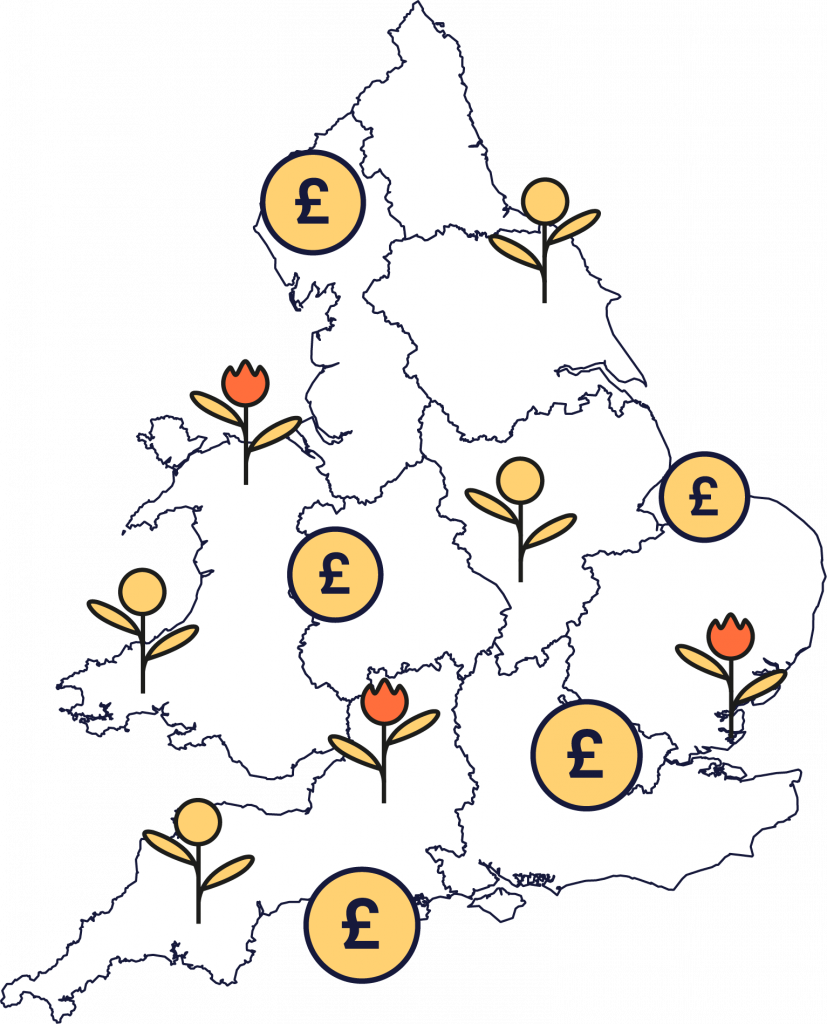Determining your rental yield is helpful for assessing the viability of a buy-to-let property as an investment. It’s also essential if you’re contemplating a buy-to-let mortgage, as lenders look at the rental income to mortgage ratio as part of their decision-making process.
Here, we’ve put together a detailed guide on how to calculate rental yield and utilise it effectively. These steps will help you make informed decisions about your property investment journey.
Why is rental yield so important?
In the world of property investment, rental yield serves as an important metric that quantifies the potential returns you can expect from your property through rental income.
Expressed as a percentage, this figure is calculated by taking the annual rental income generated by the property and dividing it by the property’s current market value.
For landlords and investors, understanding rental yield is essential for assessing the financial viability and performance of their property investments or portfolios. It acts as a barometer for the property’s earning potential, helping investors make informed decisions.
The rental yield can be influenced by a myriad of factors, including but not limited to, fluctuations in the housing market, changes in property prices, variations in interest rates and shifts in consumer demand for rental properties.
Therefore, it’s a dynamic figure that requires regular monitoring to ensure your investment remains sound.
Why do rental yields matter for investments?
Achieving a good rental yield is important. Prior to acquiring a buy-to-let property, calculate the rent you’ll need to charge to ensure your investment pays off as it gives you detailed information about the property.
If, for example, your rental income barely covers your expenses or merely breaks even, unforeseen costs like boiler repairs or a leaky roof can plunge you into financial difficulty. Alternatively, a good rental yield in relation to your finances could mean you have money leftover after fixing the boiler.
It’s worth noting, however, that rental yield isn’t the sole factor to weigh up when contemplating property investments. Other key considerations include potential capital growth and tenant demand. For instance, you might find a property with an impressive rental yield, but if the location lacks prospects for property value appreciation or you face challenges in attracting reliable tenants, the investment may lose its lustre.
Essentially, rental yield provides one part of the bigger picture – albeit a pretty important one – that can inform you about the potential of a buy-to-let property.
Top 10 locations with highest rental yield
- Explore the map
- Calculate expected yield based on your property value
- Calculate the avg. monthly rent and compare results with any location on the map

There are two primary ways to calculate rental yield: either through a manual approach or by using a calculator. Let’s look at both options:
Manual
To calculate the rental yield, divide the annual rental income by the property’s purchase price, and then multiply by 100 to get a percentage. This basic formula gives you the gross rental yield. For a more accurate net yield, subtract all property-related expenses from the annual income before dividing.
Use a calculator
With Molo’s rental yield calculator, you can see potential rental yields for areas across England and Wales. Simply select the ‘gross yield’ option on our calculator page and enter the value of the property and suspected monthly rental income to reveal the current gross rental yield.
Understanding the distinction between gross and net rental yield is really important as it dictates the kind of calculation you’ll need to perform. Here’s a straightforward way to differentiate the two:
Gross
Gross rental yield is the figure you get before accounting for any expenses. It’s calculated by taking the property’s price and the income it generates.
Let’s say you’ve purchased a property for £200,000 and you’re renting it out for £1,000 per month. Your annual rental income would be £12,000.
Gross Rental Yield = (Annual Rental Income / Property Price) x 100
= (£12,000 / £200,000) x 100
= 0.06 x 100
= 6%
Your gross rental yield would be 6%.
Net
In contrast, net rental yield is the amount you’re left with after all expenses are deducted. This is calculated by considering the property’s price, the income it brings in, and any additional costs and fees associated with property ownership.
Now, let’s consider you have annual expenses like maintenance, insurance, and property taxes amounting to £2,000.
Net Annual Income = Annual Rental Income – Expenses
= £12,000 – £2,000
= £10,000
Net Rental Yield = (Net Annual Income / Property Price) x 100
= (£10,000 / £200,000) x 100
= 0.05 x 100
= 5%
Your net rental yield would be 5%.
How can I increase the rental yield?
In a volatile property market with shifting mortgage interest rates, your rental yield isn’t set in stone. But here are several steps you can take to optimise it.
If you’re charging less than the going rate, consider raising the rent in line with your tenancy agreement. On the other hand, if your rent is steep for the property or area, you might want to lower it to minimise vacancy periods and lost income.
Houses in Multiple Occupation (HMOs) are properties rented by three or more individuals who don’t form one household or multiple tenancies. While there are logistical aspects to think about before converting your property into an HMO, it could be a lucrative move as you’ll have multiple rent streams.
Don’t underestimate the impact of regular outgoings on your net yield. Simple changes can lead to significant savings. Whether it’s remortgaging for a better mortgage deal or finding cost-effective maintenance services, these steps can enhance your net rental yield.
Switching to short-term rentals can boost your rental yield, especially in tourist areas where higher rates are achievable. However, be mindful of extra costs like frequent cleaning and marketing. Offering amenities like Wi-Fi can make your property more appealing and help maximise your returns.
Final thoughts: calculations
Calculating the rental yield for a buy-to-let property offers helpful insights that can inform your decision, whether it’s investing in a new property or otherwise. Don’t forget that you can calculate the rental yield for properties in areas across England and Wales with Molo’s rental yield calculator.
Top 10 locations with highest rental yield
- Explore the map
- Calculate expected yield based on your property value
- Calculate the avg. monthly rent and compare results with any location on the map



